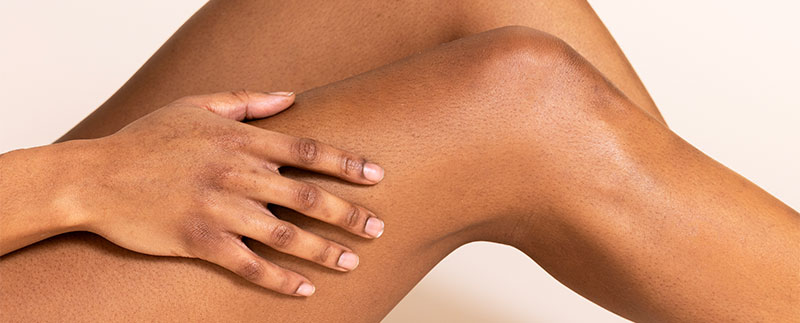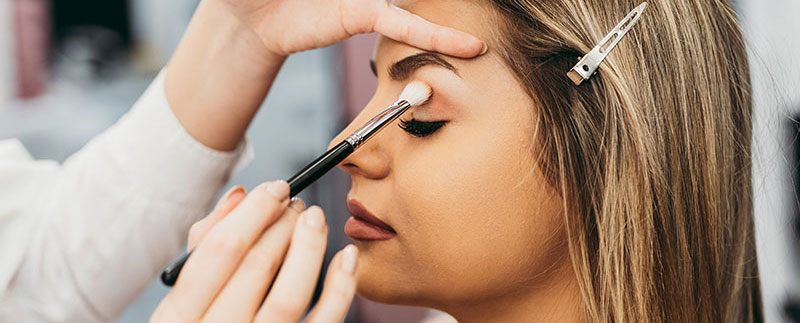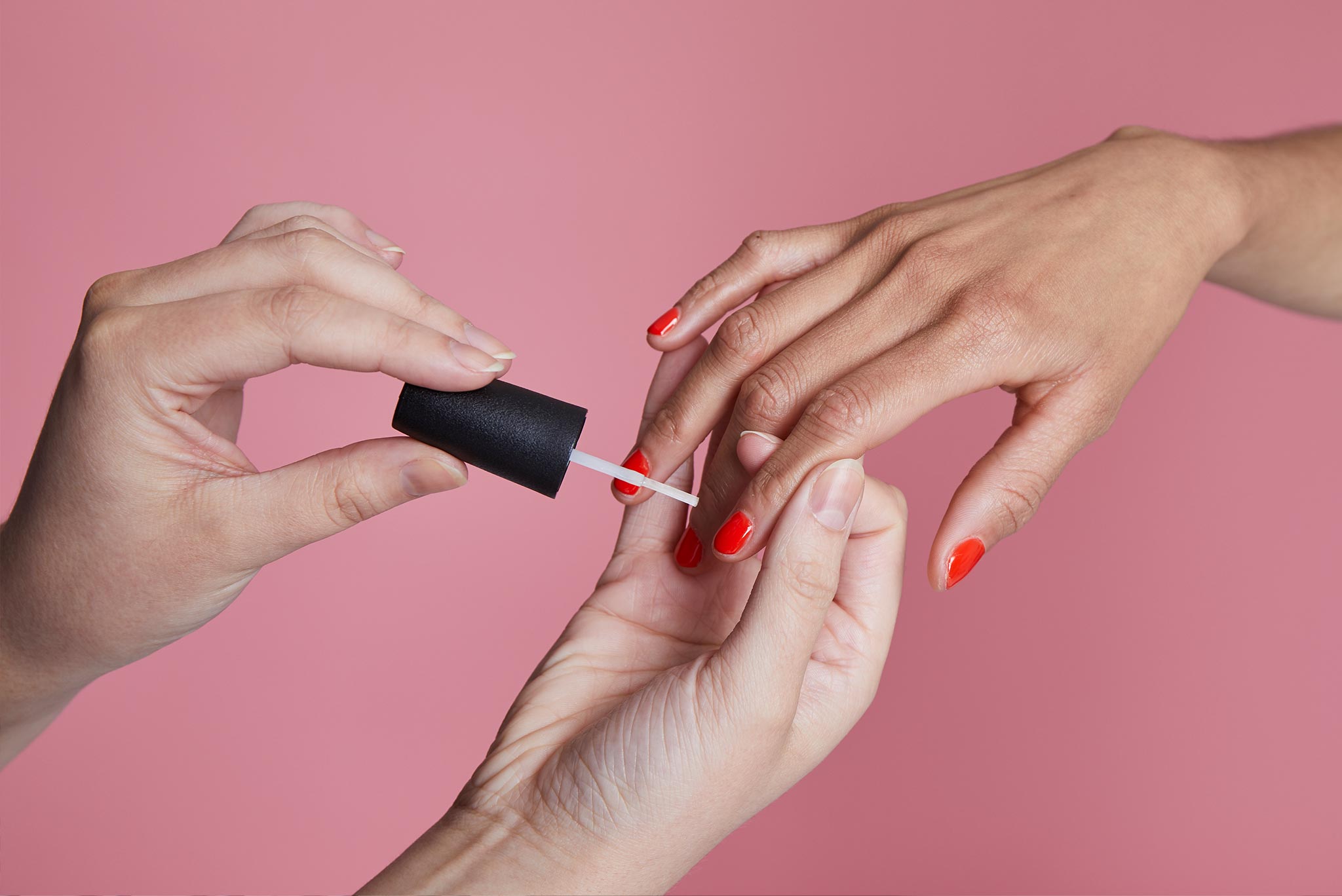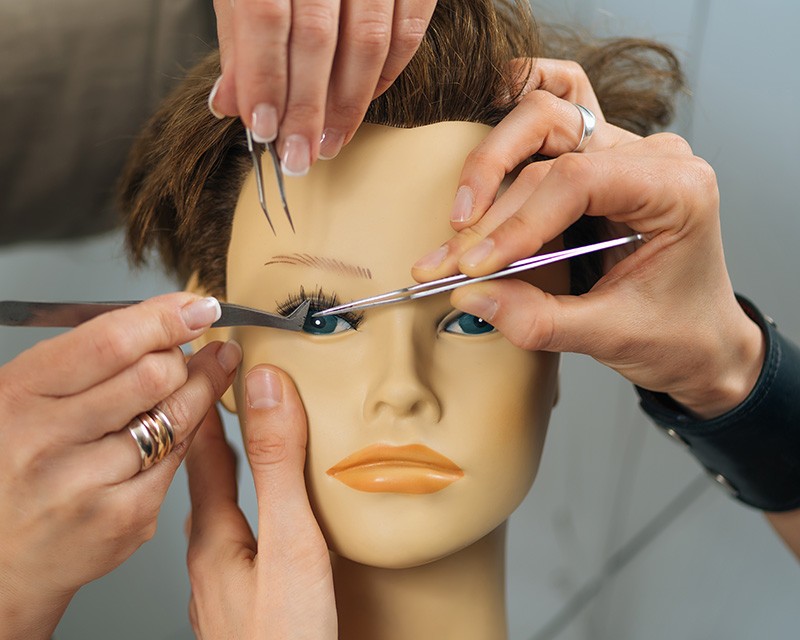How to become a massage therapist: A 4 step career guide
You must attend a massage school, pass state exams and then apply for and maintain licensure for a career as a massage therapist. You can also choose to practice specialty techniques to provide individualized experiences that treat conditions and promote relaxation.
Milady | August 17, 2023 | 10 min read

Are you looking for a career that bridges the gap between health, beauty and relaxation? Do you want to work with clients to help them feel their best? If so, a career in massage therapy may be in your future.
Massage therapy is a rapidly growing industry where you can work individually with clients to address various conditions and offer relaxing treatments. This career path has room to grow, a high satisfaction rate and is suitable for those who want to work for themselves or in a variety of unique locations.
Are you ready to learn more? We’re here to guide you through starting your career in massage with this comprehensive guide on how to become a massage therapist.
Table of Contents
- What is a massage therapist?
- Step 1: Attend massage therapy school
- Step 2: Pass the state board exam
- Step 3: Obtain and maintain a massage license
- Step 4: Choose a massage specialty
- FAQ for becoming a massage therapist
- The latest on massage and beauty
What is a massage therapist?
A massage therapist is a trained and licensed professional specializing in therapeutic services that manipulate their client’s soft tissue to promote relaxation and healthy muscles.
In general, massage therapists assess their client’s needs so they can provide an individualized experience that will alleviate pain, treat health conditions and symptoms, increase relaxation and reduce muscle stiffness. Masseuses use various massage techniques, tools and the pressure of their arms and hands to create a customized treatment.
Of course, a massage therapist’s duties go beyond the appointment. Other responsibilities of a massage therapist include but are not limited to:
- Communicating with clients (before, during and after appointments)
- Documenting sessions and client preferences
- Maintaining health and safety standards
- Learning new massage techniques
- Assessing client needs and wants
- Planning treatments
- Offering treatment enhancements
- Educating their clients
- Scheduling appointments and other administrative tasks
Now that we’ve covered the key responsibilities of a massage therapist, you’re ready to learn how to become one. You can become a massage therapist using the four steps below.
Step 1: Attend massage therapy school
Massage therapists are trained and licensed professionals that must attend a massage therapy school before working. Let’s look at what you can expect from an education in massage therapy.
What are the prerequisites and qualifications?
Some institutions may have other requirements, but you can expect most school prerequisites to be a high school diploma or the equivalent (GED), and you must be 18 or older.
How long does it take?
Like cosmetology school, massage education hours depend on the state where you reside. Some states require up to 900 hours of training. However, the most common requirement across the United States is 600 hours. A 600-hour program will take three to four months to complete if you go to school full-time. Those who attend part-time (20 hours per week) can expect to be in school for seven to eight months.
What should I expect in massage school?
The massage school curriculum will vary by state and school. However, you can expect to learn the same basics at any massage school.
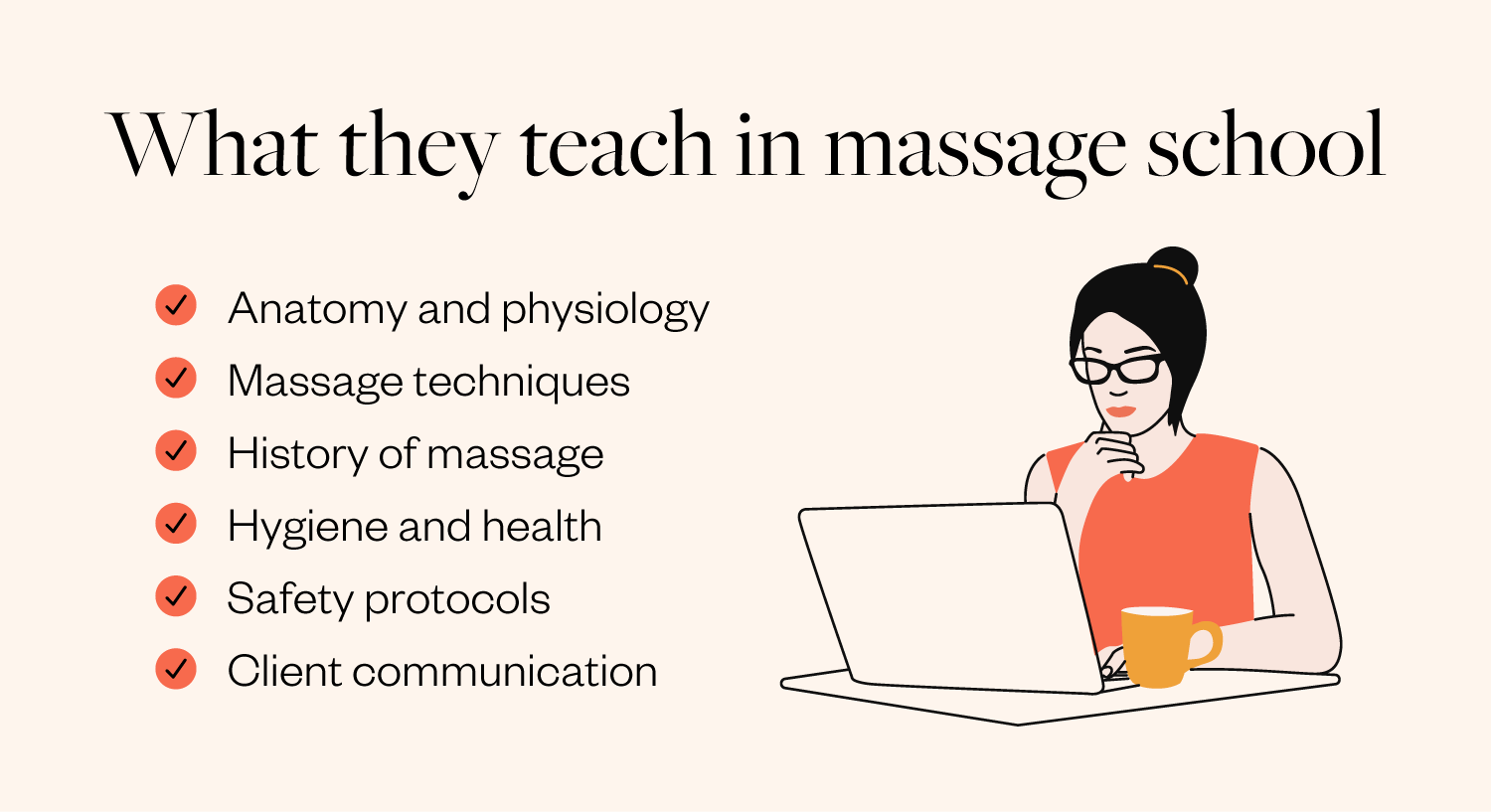
Here are the basic concepts taught in massage school:
- Anatomy and physiology
- Massage techniques
- History of massage
- Hygiene and health
- Safety protocols
- How to communicate with clients
Massage school, like many other trade programs, is a blend of theory and practice. This means you’ll learn inside a classroom and work with real clients under an instructor’s supervision.
Step 2: Pass the state board exams
Once school is complete, you’ll need to take and pass your state’s massage therapy board exam. Most states (including the District of Columbia and U.S. territories) offer the Massage and Bodywork Licensing Examination (MBLEx), which the Federation of State Massage Therapy Boards administers.
Please note there are a few states that offer their own board exam. Please check your state’s Board of Licensing website for more information.
The MBLEx and other massage therapy state exams may include questions on the following topics:
- Anatomy and physiology
- Kinesiology
- Pathology, contraindications, areas of caution and special populations
- Benefits and effects of soft tissue manipulation
- Client assessment and treatment planning
- Ethics, boundaries, laws and regulations
- Professional practice guidelines
The Federation of State Massage Therapy Boards’ website offers study materials and practice exams that you can use leading up to your exam date. Your state and school may also offer test preparation materials for purchase.
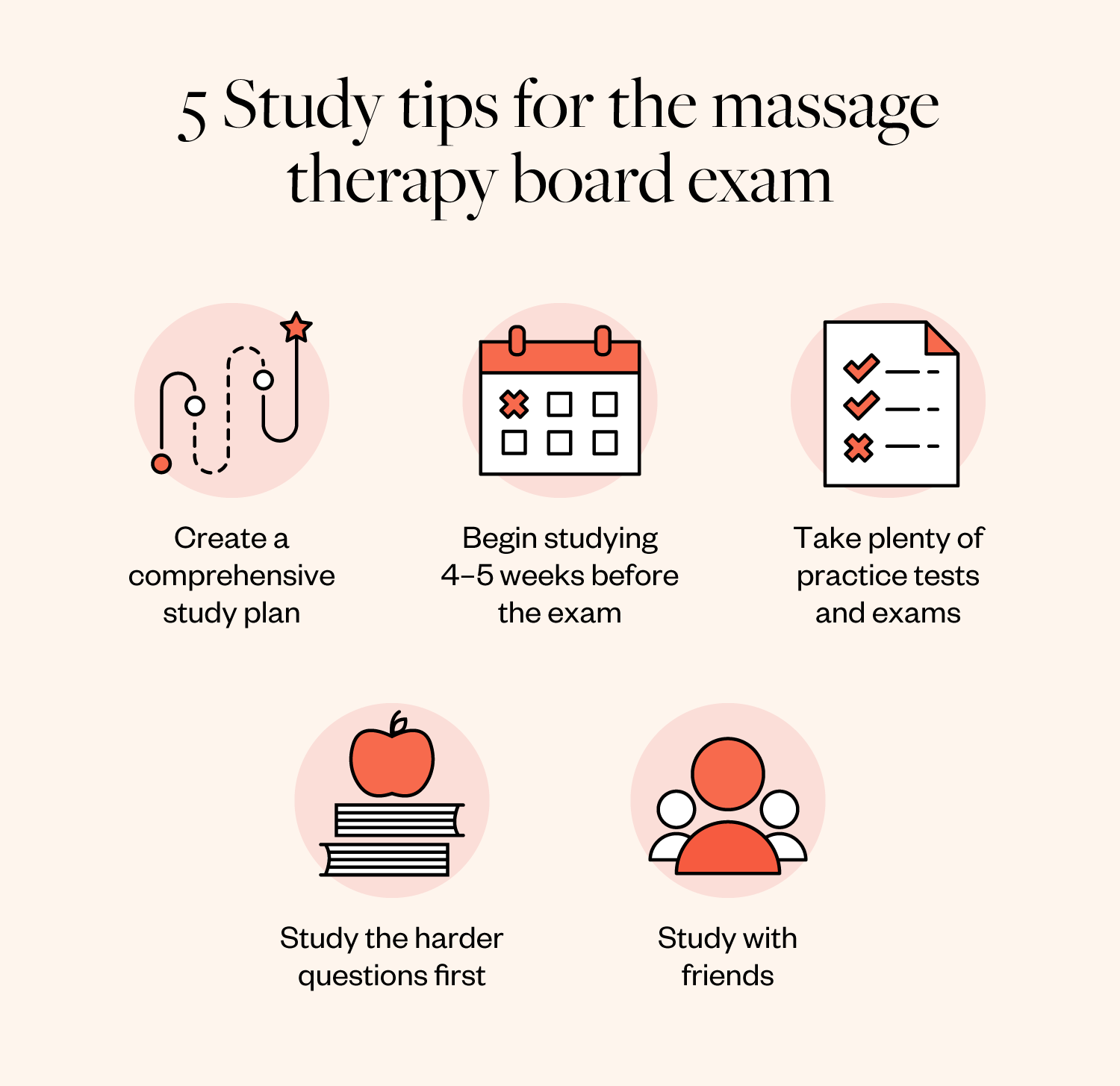
Step 3: Obtain and maintain a massage license
Once you graduate from your program and pass the state board exam, you can apply for your license to practice as a massage therapist.Many states process applications through their state’s Board of Licenses website, but some states may still require mail-in applications. Make sure you check your state’s requirements well before applying so you have everything in place beforehand.
After getting licensed in your state, you’ll need to upkeep your license by reapplying by your set deadline (usually once a year or every other year).Many states also require that massage therapists take a set amount of continuing education hours each year to maintain their licensure.
Certain states also require that massage therapists take and pass the state board exam again to reapply for licensure. Check with your state licensing board for the most current information.
Step 4: Choose a massage therapy specialty
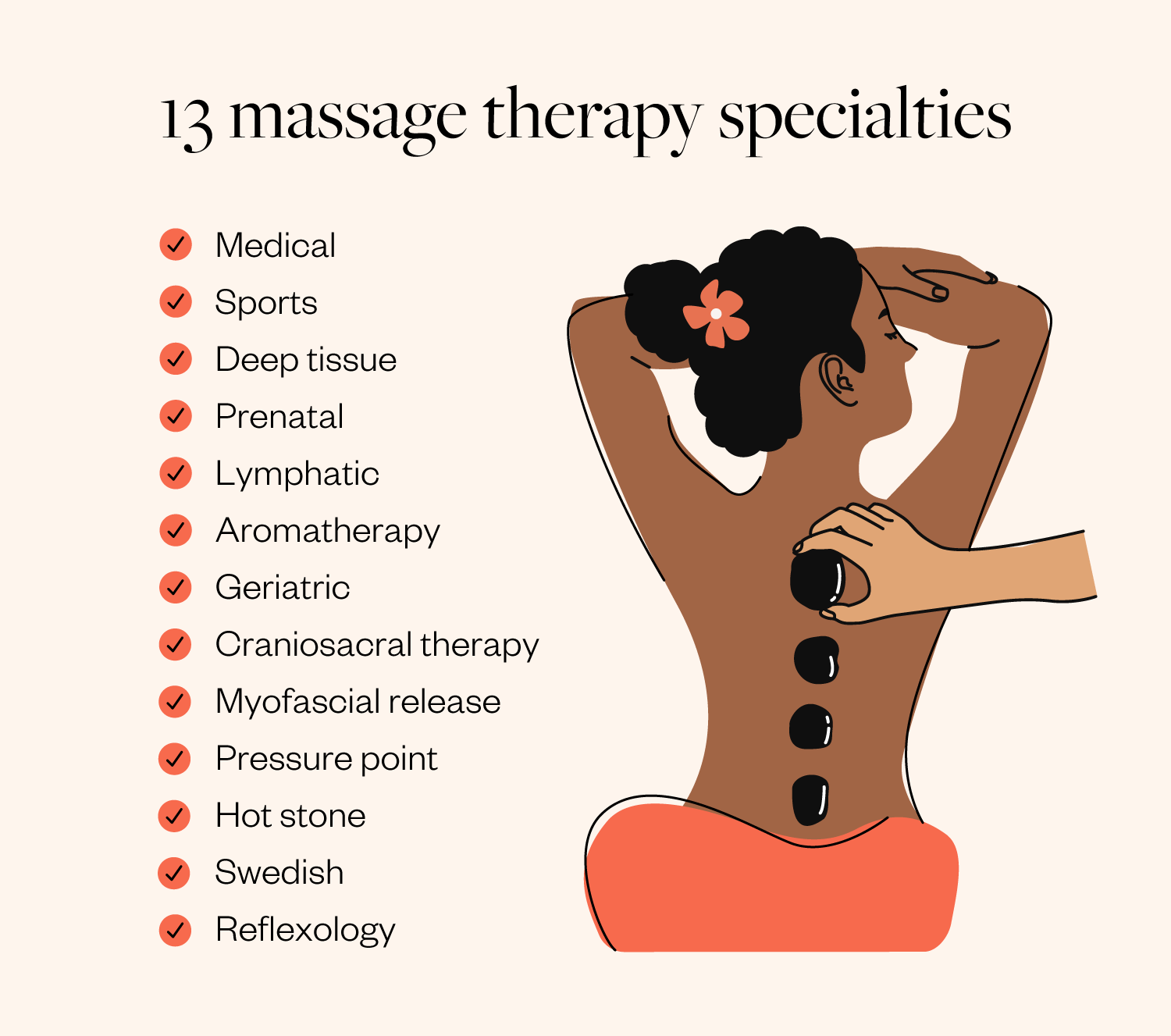
While massage therapists aren’t required to focus on one type of practice, they often prefer to stick to one or two techniques. These are some of the massage specialties that masseuses may offer once licensed:
- Medical: Medical massages address specific medical conditions or symptoms like chronic pain or post-injury rehabilitation.
- Sports: This type of massage is usually performed on athletes or active individuals to treat injuries and promote muscle recovery.
- Deep tissue: This massage targets the deeper layers of the muscles and soft tissue.
- Prenatal: This treatment tailors to expectant mothers dealing with the pains and discomforts associated with pregnancy.
- Lymphatic: This massage targets the lymphatic system to maintain fluid balance, filter toxins and support the immune system.
- Aromatherapy: A traditional massage using essential oils to enhance the client’s relaxation and overall experience.
- Geriatric: This treatment helps older adults dealing with the health changes and pains that come with aging.
- Craniosacral therapy: The use of soft pressure and non-invasive techniques to release restrictions in the craniosacral system and improve the function of the nervous system.
- Myofascial release: A therapeutic technique that releases tension within the fascia.
- Pressure point: A message technique in which a therapist uses their fingers, elbows or another tool to firmly place pressure on certain points of the body to alleviate pain and promote self-healing.
- Hot stone: Uses smooth, warm stones to heat, massage and relax the muscles.
- Swedish: Uses long strokes, circular motions, kneading and tapping to improve circulation and reduce muscle tension.
- Reflexology: The practice of applying pressure to certain pressure points that correspond to various organs and body systems.
Please note some of the above techniques require additional training beyond what you learn in school. You can acquire this additional training through continuing education hours.
FAQ for becoming a massage therapist
Are you looking for more information about a career in massage therapy? Here are the answers to some of the most common questions!
Where do massage therapists work?
Massage therapists benefit from working with all kinds of people in various settings. Massage therapists have a wide range of options, from medical settings to spas.
Massage therapists work at:
- Spas: Day spas, resort spas and spa chains are one of the most popular settings for a masseuse.
- Physical therapy centers: Massages aren’t just for relaxing. Many physical therapy practices have a masseuse on staff to help relieve pain associated with certain muscle injuries or disorders.
- Chiropractic offices: Those who suffer from back pain may often visit a chiropractor’s office to align their spine. While back pain may start at the spine, it can affect the surrounding soft tissue. For this reason, many chiropractic offices offer massage therapy as part of their treatment.
- Fitness centers: Premier gyms and fitness centers may offer their members massage services as a perk to help them stretch and reduce soreness after their workouts.
- Salons: Many salons offer massage services in addition to their hair, nail and skin treatments. Salon owners may also rent out private rooms for massage therapists that work for themselves.
- Home visits: Many states allow massage therapists to work in their client’s homes as a traveling masseuse to offer convenient in-home services.
- Sports teams: Many professional sports teams have an on-staff massage therapist to work with athletes to relax and stretch their sore muscles.
How much does a massage therapist make?
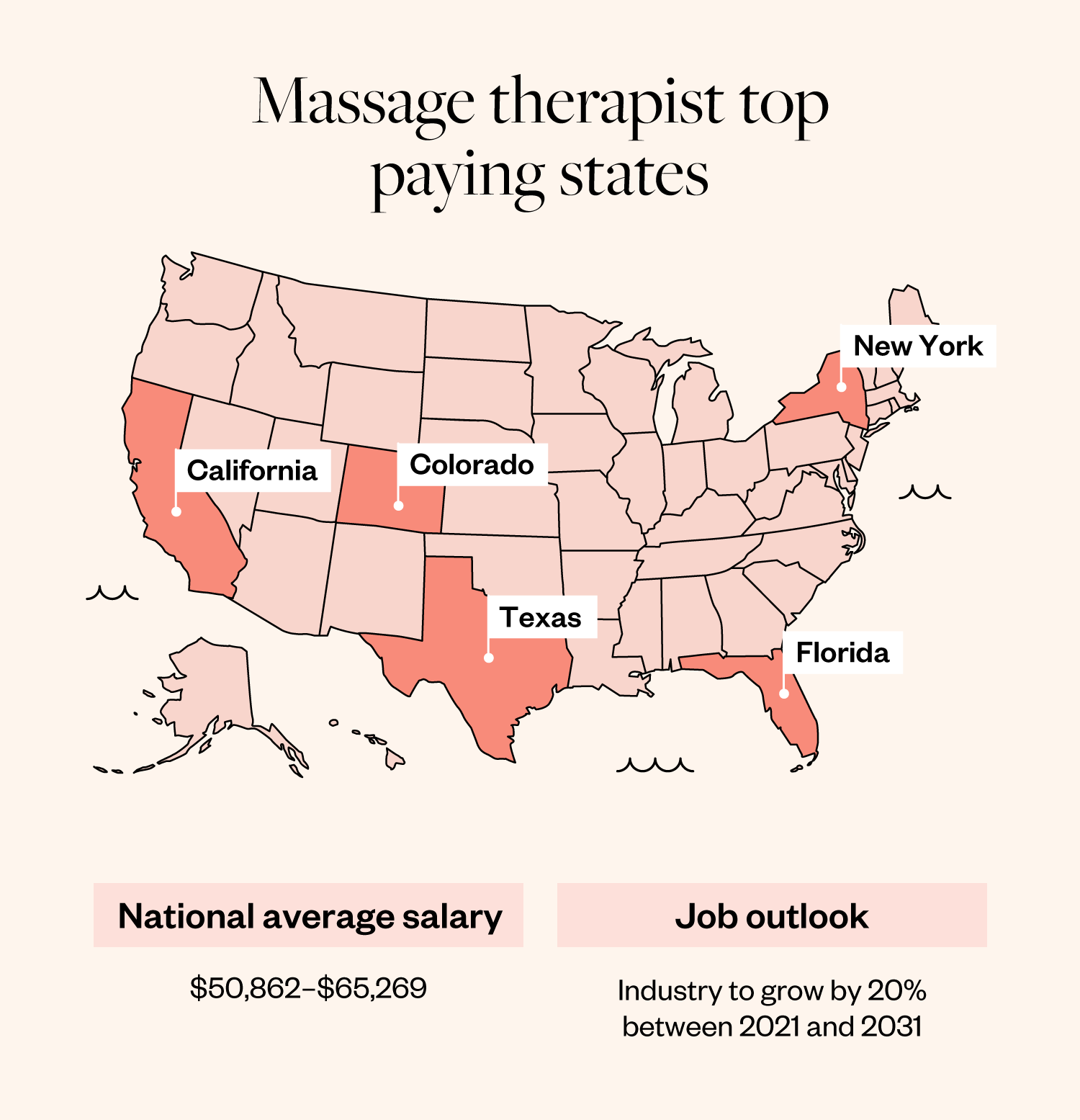
Salary.com reports that the average salary range for massage therapists in the United States is $50,862 to $65,269. The Bureau of Labor Statistics (BLS) reports that the median hourly wage for massage therapists is $23.97 an hour. According to both sources, the top-earning 10%of massage therapists make over $70,000.
What states pay the most for massage therapists?
Massage therapists can make a successful living in almost any state. However, states with wealthier residents or large tourism industries typically pay more for massage therapists, according to the BLS.
Here are the top five best-paying states to work in as a massage therapist
- California
- Florida
- Texas
- Colorado
- New York
What are the pros and cons of a career in massage therapy?
As with any job, massage therapy has plenty of benefits and a few downsides. These are the most reported pros and cons of a career as a masseuse:
Pros of becoming a massage therapist:
- Growing demand: The massage industry is projected to grow by 20% between 2021 and 2031, faster than most other growing industries.
- Job flexibility: Many massage therapists work for themselves and decide the type of massage they want to specialize in, where they work and how often they work.
- High job satisfaction rate: A 2019 study of nearly 1,200 massage therapists found that 88% of massage therapists are either very satisfied or satisfied with their jobs. And 99% of those surveyed report that they believe their work has a positive impact.
- Work in various settings: As mentioned before, massage therapists can work in various environments and industries. Even if you were to become a massage therapist who works only in spas, you could work at a local day spa, at a 5-star resort, or even on a cruise ship!
Cons of becoming a massage therapist:
- Physical demand: Since massage therapists stand for most of their appointments and use the pressure of their hands, fingers and arms to massage their clients, the job can take a physical toll on the body.
- Variable income: Many masseuses working for themselves may not make the same income from week to week. There’s always a chance of a slow week where they make less than previous weeks.
- Client acquisition: Massage therapists often have to market themselves and their services to attract new and returning clients. While client acquisition can be difficult, it offers them stability in their job as they fill up their schedule.
The latest on massage and beauty
Whether you’re looking into how to become a massage therapist or just curious about the industry, sign up for the Milady Newsletter. You’ll find all the latest information, news and trends in massage and beauty in our newsletter. You might even see some career advice!
Ready to stay in the loop? Subscribe to our newsletter today!
Ready to take the first step towards an exciting and rewarding career in the beauty industry?
Sign up for the Milady email list. As a subscriber, you’ll get a sneak peek into the world of beauty and all the possibilities that await you. Don’t miss out on this opportunity to stay in the know and start your journey towards a brighter future today.
"*" indicates required fields

About Milady
Milady is on a mission to prove that a career in the beauty industry can lead to professional success and personal fulfillment. Our job is to create forward-thinking education that reshapes the industry and uplifts the next generation of beauty professionals. Let’s change the face of beauty. Learn more about Milady, here.

